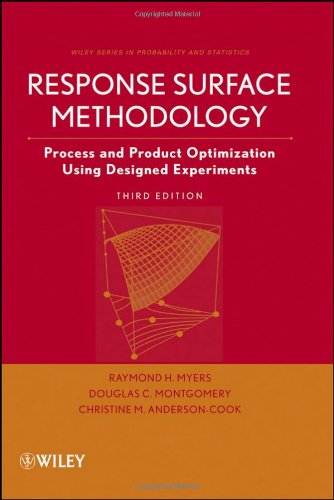

Most ebook files are in PDF format, so you can easily read them using various software such as Foxit Reader or directly on the Google Chrome browser.
Some ebook files are released by publishers in other formats such as .awz, .mobi, .epub, .fb2, etc. You may need to install specific software to read these formats on mobile/PC, such as Calibre.
Please read the tutorial at this link: https://ebookbell.com/faq
We offer FREE conversion to the popular formats you request; however, this may take some time. Therefore, right after payment, please email us, and we will try to provide the service as quickly as possible.
For some exceptional file formats or broken links (if any), please refrain from opening any disputes. Instead, email us first, and we will try to assist within a maximum of 6 hours.
EbookBell Team

5.0
88 reviews"This book [is for] anyone who would like a good, solid understanding of response surface methodology. The book is easy to read, easy to understand, and very applicable. The examples are excellent and facilitate learning of the concepts and methods."
—Journal of Quality Technology
Complete with updates that capture the important advances in the field of experimental design, Response Surface Methodology, Third Edition successfully provides a basic foundation for understanding and implementing response surface methodology (RSM) in modern applications. The book continues to outline the essential statistical experimental design fundamentals, regression modeling techniques, and elementary optimization methods that are needed to fit a response surface model from experimental data. With its wealth of new examples and use of the most up-to-date software packages, this book serves as a complete and modern introduction to RSM and its uses across scientific and industrial research.
This new edition maintains its accessible approach to RSM, with coverage of classical and modern response surface designs. Numerous new developments in RSM are also treated in full, including optimal designs for RSM, robust design, methods for design evaluation, and experiments with restrictions on randomization as well as the expanded integration of these concepts into computer software. Additional features of the Third Edition include:
Inclusion of split-plot designs in discussion of two-level factorial designs, two-level fractional factorial designs, steepest ascent, and second-order models
A new section on the Hoke design for second-order response surfaces
New material on experiments with computer models
Updated optimization techniques useful in RSM, including multiple responses
Thorough treatment of presented examples and experiments using JMP 7, Design-Expert Version 7, and SAS software packages
Revised and new exercises at the end of each chapter
An extensive references section, directing the reader to the most current RSM research
Assuming only a fundamental background in statistical models and matrix algebra, Response Surface Methodology, Third Edition is an ideal book for statistics, engineering, and physical sciences courses at the upper-undergraduate and graduate levels. It is also a valuable reference for applied statisticians and practicing engineers